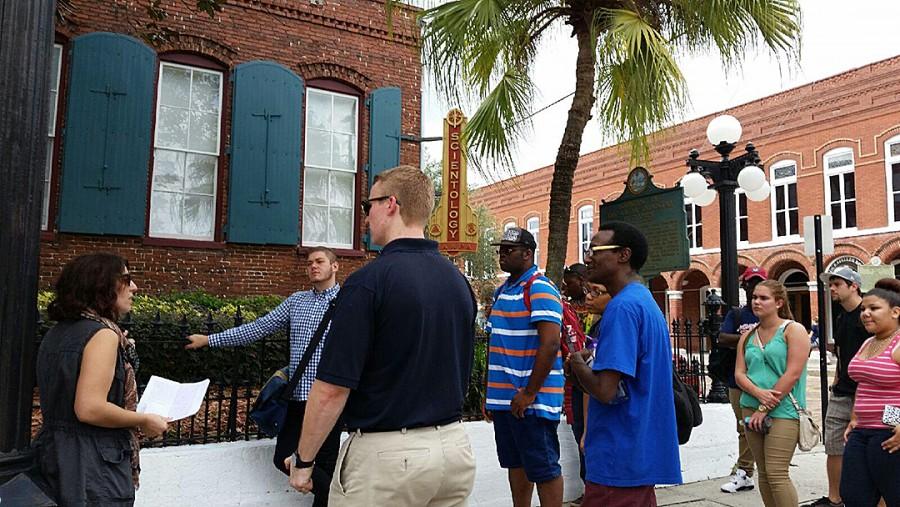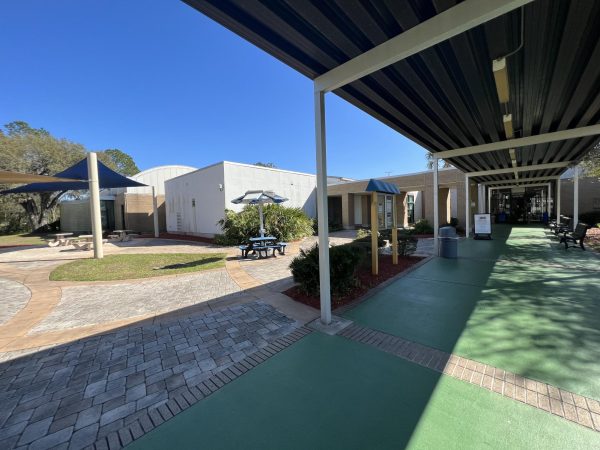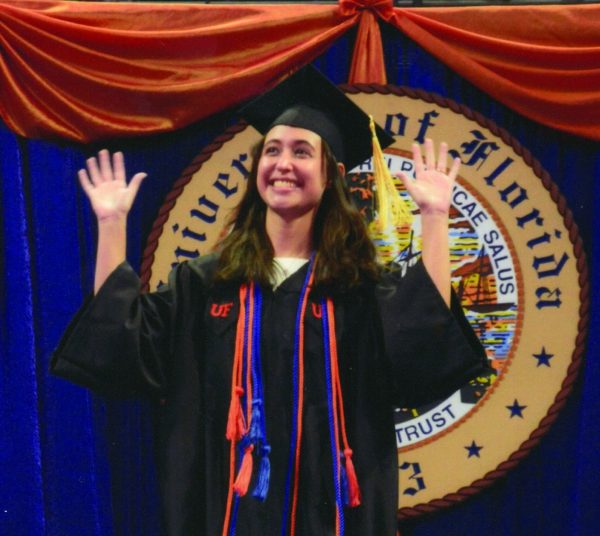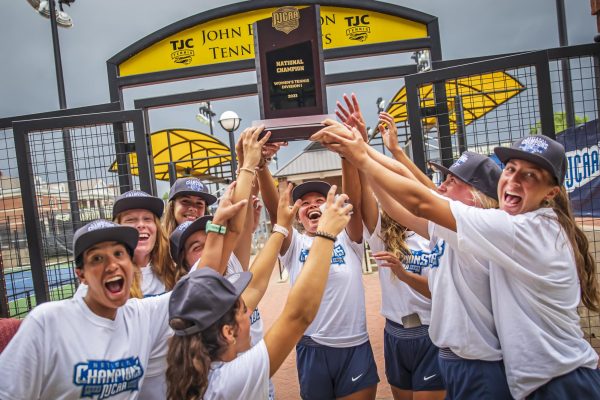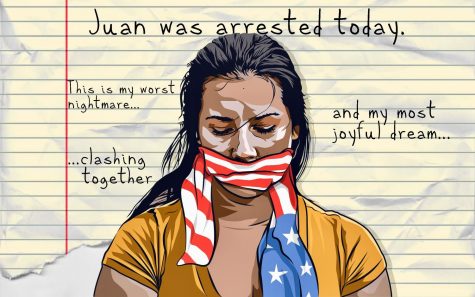Class Takes a Walk Down History Lane
It was the Ybor City Historic Walking Tours that guided the two classes down history lane.
For some students class can be a walk in the park, but for a group of students, class was literally walking to a historic park for a grade.
Professors Trujillo’s Spanish and Vicente’s history classes met for a guided walking historic tour of Ybor that would be an opportunity at earning some extra credit.
The groups’ first stop was outside the Church of Scientology, which was formerly Tampa’s first cigar factory back in the late 1880s.
Rolling cigars by hand was a skilled trade, and it’s what would become the main source of income for the city of Ybor at the time. However after World War II, the economy drastically changed, and hand rolled cigars were no longer a lucrative business.
The predominant language in the late 1800s in Ybor was Spanish due to the influx of Cuban immigrants that moved into the area. Ybor was not juts home for Cuban immigrants, but Italian immigrants as well.
Segregation was a problem even within the small community here in Ybor. The Jim Crowe laws at the time had black Cubans and white Cubans facing discrimination within their own community.
The last stop on the tour was to the Centennial Park, where the white “shotgun” style homes were located. The homes were built up off the ground for flooding and cooling reasons.
Because the homes were built off the ground, the crawl space allows air to flow underneath the homes during the hot summer months.
The homes were built from heart of pine, and the trees were provided form forested area just north of Tampa. Big windows and a vaulted ceiling added to help cool the homes.
Cuban bread and Cuban coffee would be delivered every day, or twice a week to the homes. A single nail, located above the front door, was the indication for bread delivery.
The loaves were literally slapped upon the nail to keep the animals from getting to the food, and ensuring that the owners of the house received their sustenance.
Edward Thomas, a student in Trujillo’s class, commented on what he thought of the tour. He says, “I learned a lot more than I knew before taking the tour….I would do more tours. I felt as though knowledge is all around you, but you must be open enough to go out and seek it.”
The students in these classes were given an opportunity most student stress over, and that being receiving a shot at extra credit. This untraditional approach to extra credit gave these students something to look forward to when heading to class the next time.

Matthew Flanagan is Staff Writer of The Hawkeye
Matthew “Matt” Flanagan was born in Kansas City, Missouri on the date of February 22nd, 1984. Flanagan...

